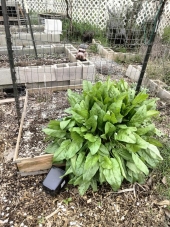


May Lotito wrote:In the original mompei pattern, the triangle is stitched to the back leg along the straight side (b), mine used the longest side (c).
In the first method,
Crotch seam length= 2b+2c-a
Front rise= b+c-a
Fabric length= front rise+inseam+hem.
It is much longer in the rise and the back side also look different.
In the second one:
Crotch seam length =2c+a
Front rise=c
So it requires less length in fabric and the crotch curve resembles more of the shape of contemporary pull on pants.
Or one can change the b:a ratio. Like the one of liz made, 10by 30 it is. Just do some calculation before cutting. It is simple geometry.


William Bronson wrote: I think the comparison between kit built Temp Cast to a home built RMH is not necessarily useful.
Many people do not own their homes outright, so even if there are not air quality regulations to deal with, insurance companies tend to frown on homemade wood heaters.
Temp Cast vs the Liberator could be a better comparison, since both have regulatory approval.

Anita Martin wrote:
On this page there is a gallery for Kachelöfen (apparently called cockle stove):
https://en.wikipedia.org/wiki/Masonry_heater

J Kiran wrote:Thank you Wayne and Renate for your posts.
To answer some of your questions, I live in India and that dog is an Indian Pariah http://en.wikipedia.org/wiki/Indian_pariah_dog.
Over this weekend (which is one week since the incident), I kept a bit more closer watch on her and the good news is that she seems to be getting over it well. The first few days after that incident, she was walking slow, not interested in even her favourite food and wasn't making any eye contact. But over this weekend, she has steadily become a bit more active. She is now making much more eye contact and has been eating more actively. It's not the same as before and neither am I expecting it to be. But she surely seems to be managing this well which is a good sign after having seen her sad looking eyes.

Gina Jeffries wrote: Almost 4 years ago, I lost my heart-dog who would kayak, herd, mind baby goats, defend me to the death, and organize cats and chickens.